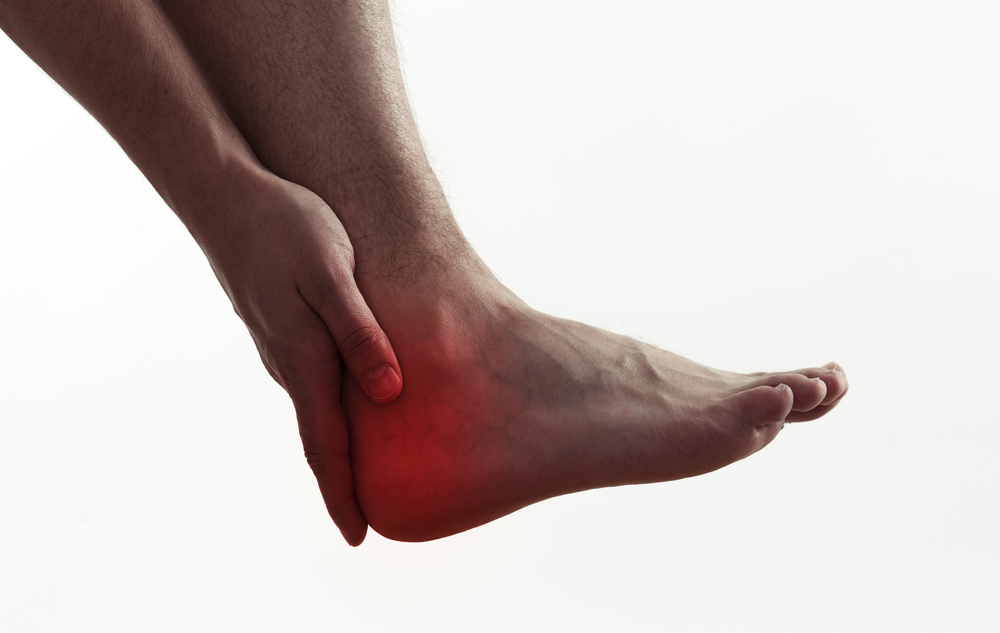Are you currently suffering from foot pain? If so, our caring providers at Island Foot Clinics in Kelowna, Nanaimo, Victoria, Campbell River, Prince George, Terrace, and Williams Lake, BC will determine the cause of your pain and develop a treatment plan to alleviate it.
Top Causes of Foot Pain
Flat Feet
When you walk, the entire bottom part of your feet should not touch the ground. There should be an arch on the inside part of your feet that doesn’t touch the surface on which you’re walking. If the soles of your feet entirely touch the ground, then you could have flat feet, which can lead to pain in your feet, ankles, or knees. Not everyone has pain associated with their flat fee, but if they do, it can be severe.
Heel Spurs
A spur is the name of a bony growth that sticks out on your heel where it joins with tissue that runs along the entire length of your foot. When this tissue becomes stretched by overuse or other factors, it can cause inflammation that puts pressure on the natural bone. The body tries to compensate for this pressure by growing the spur, but since it sticks out, it can become painful when wearing shoes, or even just when walking.
Bunions
A bunion develops when your big toe is pulled inward toward the rest of your toes due to the shape of the foot or tight-fitting shoes. It is considered a bone deformity that occurs at the base of the big toe, and can be very painful to the touch when it’s inflamed or irritated. You can help the pain by wearing shoes that fit properly and through exercises that keep your feet flexible. However, we can also remove bunions permanently.
Diabetic Foot Conditions
If you have diabetes, your feet need special attention. This is because of a condition that develops due to diabetes called neuropathy that makes it difficult to feel your feet. As such, if you develop any type of wound on your foot, you could be in danger of infection without even knowing it. Additionally, neuropathy can cause pain of its own such as burning and stinging. Our podiatrists can help provide solutions to all diabetic foot conditions.
Corns
This type of foot pain can develop on any part of the foot that repeatedly comes into contact with another surface, like a shoe. Corns are hard layers of skin that develop from the friction between your skin and the other surface. While you can relieve the pain from corns by wearing pads over them, never remove a corn by yourself. We can safely shave your corns off with a simple procedure and help you prevent them from recurring.
Hammertoes
This is a painful foot condition that is the result of an imbalance in your feet muscles and tendons that causes your toes to remain permanently bent at the joints. Essentially, your toes are stuck in a curled position and can usually only be corrected through surgery. You can develop hammertoes by wearing shoes that don’t have enough room in the toe area or through a genetic trait. Conservative treatment involves pads or orthotics to prevent corns from developing.
Achilles Tendonitis
Your heels are connected to your calves by the Achilles tendon, and as one of the largest tendons in your body, is often injured. Achilles tendonitis develops when your Achilles tendon becomes inflamed due to overuse during exercise or sports activities and is characterized by pain that gets worse during activity and tendon stiffness that resolved with stretching. This condition often requires therapy to fully resolve, but stretching, ice, and properly fitting orthotics can help ease the pain as well.
Plantar Fasciitis
The tissue on the bottom of your foot that connects your heel to the base of your toes is called the plantar fascia, and it can become inflamed with overuse, causing significant pain. It is more common in women, and in people who have flat feet, high arches, are overweight, and who frequently stand or walk on hard surfaces. Walking without warming up can also trigger this pain, which can be treated by properly fitting orthotics and, rarely, surgery.
Foot and Ankle Injuries
Sprains and fractures of the foot and ankle are among the biggest reasons that people seek out treatment for their feet pain. A sprain occurs when the ligaments of the foot or ankle are severely stretched or torn and a fracture is diagnosed when the ankle bone or a bone in the foot is broken. There are various types of fractures, but we can treat them all. Some may require surgery, while others may require only a cast.
Sprains and fractures may also require physical therapy to fully heal the injury. As with all conditions, we must examine your foot or ankle prior to providing a diagnosis and treatment plan. However, once that plan is developed and put into motion, your pain will begin to lessen and continue to improve throughout our treatment. A sprain takes between two and four weeks to fully heal, while a fracture can take up to 12 weeks to heal, depending on severity.
Ingrown Toenails
Who knew something so small could cause so much pain? Well, if you’ve ever had an ingrown toenail, you know exactly how much pain such a tiny injury can cause. An ingrown toenail develops when the edges of your nail grow into the surrounding skin. There are many factors that contribute to ingrown toenails, including improper trimming, curved toenails, tight footwear, certain sports (ballet, soccer, kickboxing), and improper foot hygiene (not keeping your feet dry).
Teenagers are at higher risk of ingrown toenails because they often don’t take proper care of their feet. Older adults can also be at a higher risk because toenails become thicker as we age. While ingrown toenails can be treated with home remedies, the risk of complications is high, especially if you have diabetes and can’t feel when your condition worsens. Seeking the help of our foot experts can get your ingrown toenail addressed safely and quickly.
When to See a Doctor
If you suspect you may have a fracture in your foot or ankle, give us a call immediately. Fractures need to be treated as soon as possible to prevent them from healing incorrectly, which will lead to additional pain and possibly additional surgeries to fix. Diabetics should be seeing us on a regular basis to inspect their feet for any potential problems that could turn into major complications. Diabetic foot wounds require special care and treatment.
For all other pain in the feet, you should see a doctor when home remedies are no longer effective or when the pain begins to interfere with your everyday activities. Most issues with the feet that cause pain can be treated, so there’s no reason to be living your life in pain. Come see us for a consultation to find out how we can relieve your pain and allow you to fully participate in your life once more.
Make an Appointment Today
Don’t put off getting treatment for your feet any longer. You don’t have to suffer from pain in your feet, even if you think the condition will heal on its own over time. Why wait for it to heal on its own if you can eliminate the pain now? Contact our professionals at Island Foot Clinics in Kelowna, Nanaimo, Victoria, Campbell River, Prince George, Terrace, and Williams Lake, BC for a consultation appointment today.

